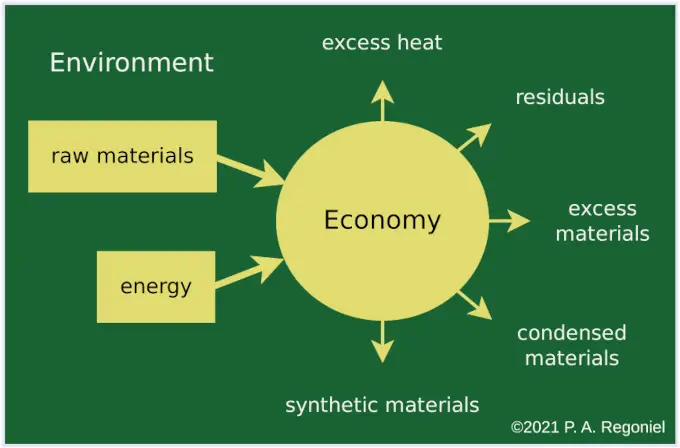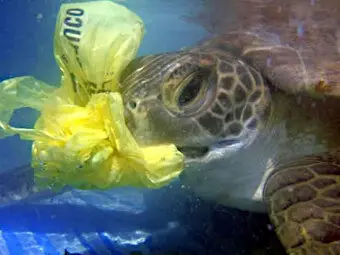What is the free rider problem? What are the five economic outputs and their environmental costs? How is this related to environmental degradation? This article explains why getting things for free can cause environmental degradation.
Many people want things free so they get to enjoy things without spending or sacrificing something for their benefit. But if you look closely, nothing’s really free. You cannot be better off without another person getting worse off. Someone pays off for the benefit you gain. This situation is a simple economics concept of the free rider problem.
For example, if someone asks you for a snack treat after you have received your salary, essentially that person is a free rider. He or she is not paying for something he or she enjoys. But this entails cost on the part of the one who treats someone out. The snack is not given free. You have to pay for it as it costs something to produce that snack.
So what does a snack contain? If you bought a hamburger, Professor Tim Lang of the University of London’s Centre for Food Policy (Quadir, 2020) says that producing one hamburger takes 2,400 liters of water. Accordingly, water has been fed into the grain that’s been fed to the cattle, and the cattle’s been made into beef.
Water has been fed into the grain that’s been fed to the cattle, the cattle’s been made into beef. One Hamburger is 2,400 litres of embedded water. That’s a heck of a lot of water.
Prof. tim lang
That’s only for the hamburger. How about the bread where the burger is placed?
Baking delicious bread would require at least 10 items, according to Josey Baker. You need flour, the sourdough starter made up of yeast and bacteria, a mixing bowl, bench knife, thermometer, scale, loaf pan, razor blade, bread knife, and of course, again, water. You need gas or electricity to heat up the oven to bake the flour mix.
That simple knife in the kitchen requires the production of steel, mined from a quarry, transported, forged, and manufactured where lots of heat and energy were used. You just have to expand your imagination and appreciate how much resources it takes to create something.
On top of it all, add the baker’s expertise and practice in making that bread. Going further, if that baker had formal education in baking, how much money did it take to finish the training?
The point of the matter is that producing a hamburger requires a lot of resources where time, money, and effort are expended to produce it. If you try further to trace all the sources of those items used in baking, you will realize that it takes a great deal of artificial and natural resources to produce them.
Perhaps the only things that can be considered free are those raw materials sourced from the environment. But are those materials really free?
If you say Yes, then that’s the beginning of the environmental degradation problem. We once thought that those things we enjoy from the environment are free. They’re not.
The goods and services we acquire from the environment entail cost; both in extracting the natural resources for our use and the waste materials that we produce after using them.
I expound on these things more in the next sections and end with a video to summarize the content.
Five Economic Outputs and Their Environmental Costs
The goods and services that we obtain from the environment freely that eventually become part of the economy are not essentially free. That’s because the quantity and quality of those goods and services depend on the health of those ecosystems.
If we exploit the resources in an unsustainable manner, environmental degradation takes place. Keeping those critical ecosystems intact as much as possible ensures the continuous supply of raw materials and energy to fuel the economic system which humans devised to meet their needs. The economy could not survive without the support of the environment upon which its sustenance anchors.
In the current arrangement of environment and economy interactions today, the cost is incurred in maintaining the health of ecosystems. Ecosystems are affected by the workings of the economy. They are closely integrated.
We can understand this relationship better by looking at Figure 1. The figure shows the relationship between the economy and the environment. I synthesized this diagram based on theories like the Neoclassical Circular Flow Model and other related concepts of environmental economics as well as ecosystems dynamics.

Notice that the economy is not 100% percent efficient in utilizing inputs from the environment namely raw materials and energy. The economy outputs materials and energy that change the quality of the environment in which it operates. These materials and energy outputs become generally known as pollution when the environment can no longer bring them back into their original form (biodegradable) and persist as foreign materials that the environment cannot handle efficiently (nonbiodegradable).
I discuss these five economic outputs in detail in the following sections to relate these outputs to the free rider problem.
Excess heat and the cost of cooling
Energy inputs from the environment include fossil fuels, hydrothermal energy, nuclear energy, among others, which are not all used up. Excess energy dissipates into the surrounding areas in the form of heat.
In urban centers, industrial plants, buildings, and even households generate heat that warms up the city in addition to the incident heat coming from the sun. Some areas called heat islands could have air temperatures up to 10°F (5.6°C), according to the US Environmental Protection Agency (EPA), which is higher than the surrounding environment. As available land where trees can grow and cool the atmosphere gets covered by buildings due to urban sprawl, more heat is produced.
The generation of excess heat is costly to humans as it worsens the living conditions on a global scale in the form of climate change and at the household level by stimulating the use of air conditioners. Much investment and effort have been made to mitigate global warming in an effort to cool down global temperatures that bring with it more severe typhoons, drought, or flooding.
Thus, environmental services of cooling the global atmosphere and the cooling effect of greenery have monetary value as we try to regain these cooling effects by spending money to enjoy once again the amenity. Cooling the planet and our homes are environmental services that are not free. They come at a cost.
Residuals
Residuals refer to materials, obtained from the environment, that can no longer be used after it has gone through processes that convert raw materials into useful items. According to Pennsylvania’s Department of Environmental Protection (PDEP), residual waste is nonhazardous industrial waste produced by industrial, mining, and agricultural operations.
Examples of residual waste include ash, contaminated soil, wasted paint, unusable electronic parts, pharmaceutical wastes, pesticides in the soil, among others that make their way into the environment through different channels. These waste materials can no longer be reused or recycled. Unless managed or disposed of properly, residual waste can harm people.
An environment ridden with residual waste has poor quality. Hence, bringing it back to its former state requires government intervention in terms of environmental management policies to govern the waste disposal behavior of industries and agricultural operations. It also sets up environmental institutions and projects to undertake expensive rehabilitation projects and campaigns.
Businesses, likewise, have to improve on their operations to prevent or reduce residual waste production. For example, a case study by the Ohio Environmental Protection found out that an automotive manufacturing company spends over $12.5 million a year due to the inefficiency of its paint spray guns. Waste disposal costs money.
On the part of the government, residual waste facilities need to be constructed to process residual waste. Examples of these facilities include residual waste processing facilities, landfills, incinerators, temporary storage, and composting facilities.
Preventative expenditure technique as an economic valuation tool estimates the cost of maintaining the quality of the environment. Again, this emphasizes the fact that maintaining the quality of the environment entails cost. Keeping the environment as healthy as possible despite the generation of residuals costs money. It’s not free. No one can indiscriminately throw residual wastes into the environment because the harm sustained will be costly. Carcinogenic substances getting their way into the human body means expensive medical bills.
Excess materials
Excess raw materials can be reused. For example, trimmings or sawdust from timber processing plants to sawmills can be used in gardening, fuel to cook food, bedding for livestock, floor cleaning, among others. Mark powers lists 10 alternative uses for sawdust.
But some material reuse requires additional methods or techniques to make them beneficial to society. Human creativity can convert these otherwise “unusable” excess or disposable materials into something useful. Extra GI bars plus scrap metals can be welded together to create works of art or functional decors just like the ones shown in the following video.
Reusing the excess materials requires additional cost. If these materials are just disposed of unmindful of their environmental impacts, the quality of the environment deteriorates. If people do so, that’s a free rider problem because the environment serves as a sink that everyone pollutes. Maintaining the environment entails cost.
I keep on emphasizing this because the free rider problem has caused many problems in places where people think it’s just okay to throw anything around. It’s good practice to always find a way to reuse excess materials sourced from the environment.
Condensed materials
Materials that are naturally distributed in their raw form are pooled together to make useful items for society to function. Examples of these materials are metal ores of nickel, iron, cadmium, copper, chromium, lead, mercury, among others. Metal ores pass through smelters that condense these metals into products like copper or iron ingots.
We all know that heavy metals are persistent pollutants that can enter the food chain and get accumulated in the bodies of organisms from plants to animals through biomagnification. These heavy metals migrate and get transported to different ecosystems and make their way to humans which can prove disastrous.
The Minamata disease in Minamata Bay, Japan is a case in point. Minamata Disease due to mercury poisoning via the marine food chain damages the central nervous system and causes paralysis. The malady brings suffering to those affected.
The restoration of the bay contaminated with mercury cost 48 billion yen (or $423,220,704.00 with adjustments), 65.5% of it borne by Chisso Co. Ltd., the factory that discharged mercury into the waters. More than 1.5 million cubic meters of contaminated sediment was removed from the bottom of the sea for a 10-year period. Contaminated fish in the bay were also removed. However, there are worries that contaminated migratory fishes will return to the bay.

Thus, if Chisso corporation did not pay for the costly impact on human life, that’s another free rider problem.
Synthetic materials
Synthetic materials are those manufactured products that tend to persist in the environment and threaten human life. These materials can take a long time to decompose because they do not naturally degrade. Some synthetic materials like polyester are easy to recycle but some like nylon is hard to decompose.
When disposed into the waterways, plastics threaten many marine life forms. According to the International Union for the Conservation of Nature (IUCN), hundreds of marine species ingest, suffocate, and entangle themselves in marine plastics.
Clearing the seas and oceans of marine plastics requires considerable investment in manpower, logistical, and financial resources. According to Misha Ketchell, it would cost around US$5.32 to collect a kilogram of plastic from the ocean. Imagine how much it would cost to clean up the vast ocean of plastics of all forms that freely float and endanger marine species that supply food to the ever-growing population.
Where is the free rider problem here? The free rider problem is the indiscriminate dumping of plastic wastes into the ocean thinking that the ocean will take care of that trash. If individuals or businesses do not pay for the pollution they create, they are free-riding. But if they are made to pay for every trash that they dump, they are now internalizing the cost and the free rider problem is avoided.
Free Rider Problem Causes Environmental Degradation
All of the economic outputs discussed in the previous section illustrate the concept that whatever we do to the environment becomes costly in terms of pollution. We need to clean the messy and harmful impact of pollution to bring back ecosystem services and goods to their former function or form.
Unless addressed, the economy tends to destroy the reason for its existence in the form of environmental degradation. If we regard whatever we enjoy from the environment as absolutely free, unmindful of the costly repercussions, we face the free rider problem.
Vanya Bisht succinctly summarizes the free rider problem in the following highly informative video on this environmental economics topic. She gives a background on basic economics, the Prisoner’s Dilemma, and the Theory of Collective Action to explain how the free rider problem correlates with environmental degradation.
Understanding the free rider problem helps us realize that whatever we gain from the environment is not free. Unless we responsibly and sustainably extract the natural resources, and minimize if not avoid indiscriminate dumping of waste that pollute the environment, we will pay the cost in due time.
Ecosystems may dilute substances that change the natural processes that sustain food production, but we know that there are limits on their carrying capacity.
©2021 November 7 P. A. Regoniel
[cite]

